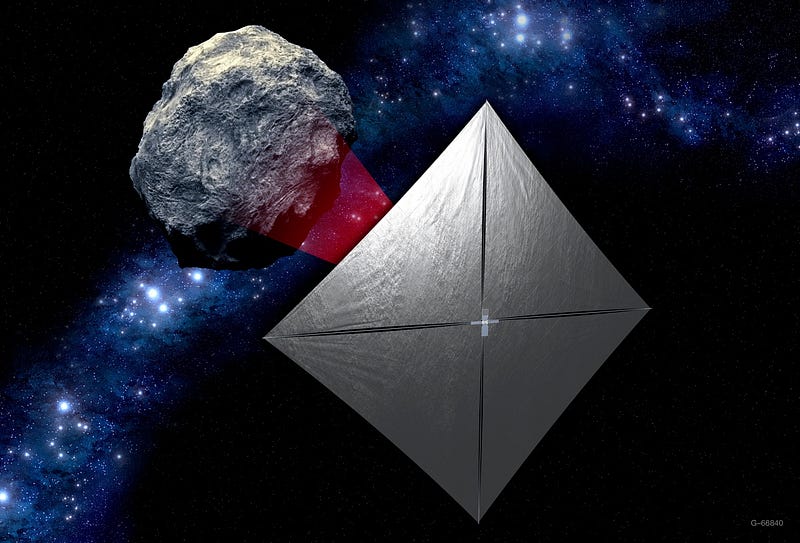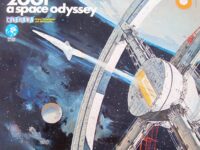Sailing into the Abyss: A Pioneering Development in Space Travel
By Jennifer Garland, Applied Physics, 2021

This article was originally published as part of Issue 35: Motion.
The history of spaceflight has depended on chemical rocket engines as the primary form of propulsion. However, fuel limits our exploration range and takes up 95 percent of the weight of the aircraft. New technology in the form of lightweight “solar sails,” or photoelectric material utilizing the sun’s energy, may revolutionize our access to space, perhaps bringing humans past the moon for the first time.
Indicated by their name, solar sails use the sun’s power to move. The sails are made of a thin, reflective material, and photons from the sun collide with the surface, transferring enough momentum to propel. The concept is similar to throwing balls, but photons do not have mass, so the process is not driven by direct impact. Light acts as a particle and a wave, and the energy of the waves is absorbed by the reflective surface of the sails, creating the necessary force in a process called “radiation pressure.” According to Newton’s Second Law of Motion, F=ma, high acceleration in space travel requires a small mass if there is a constant force from the sun.
The sails are made of a thin, reflective material, and photons from the sun collide with the surface, transferring enough momentum to propel.
Solar sails are much more maneuverable than traditional rockets, because the steering sail equipped spacecraft draws on similar methods used to sail on water. Asymmetric thrust is key, with one side of the sail darkened by an electro-optic coating to turn the body. Though conventional rockets have a higher initial velocity, loss of fuel supplies cause a sharp taper, causing a limit at the solar escape velocity around 36,500 miles per hour. Solar sails allow spacecraft the potential to steadily travel over 60,000 miles per hour, providing a promising shot at swift and efficient interstellar space travel.
The idea of solar sails has been around since 1924 in Russia, and NASA started investigating in the 1990s. Advances in smaller, lighter electronics in recent years have increased feasibility of solar sails.
Now in 2018, NASA is launching the first space probe powered by sunlight and traveling past the orbit of Earth on a mission to reach asteroid 1991 VG. Named the Near-Earth Asteroid Scout (NEA Scout), the small probe will reach space with the International Space Station and be initially propelled by cold gas. Weighing up to 14 kilograms and similar to size as a shoebox, NEA Scout will be energy and cost efficient as it travels approximately two years to gather pictures and data about the asteroid’s motion and chemical composition. The observations will provide integral information for planning the first steps for crewed asteroid missions.





